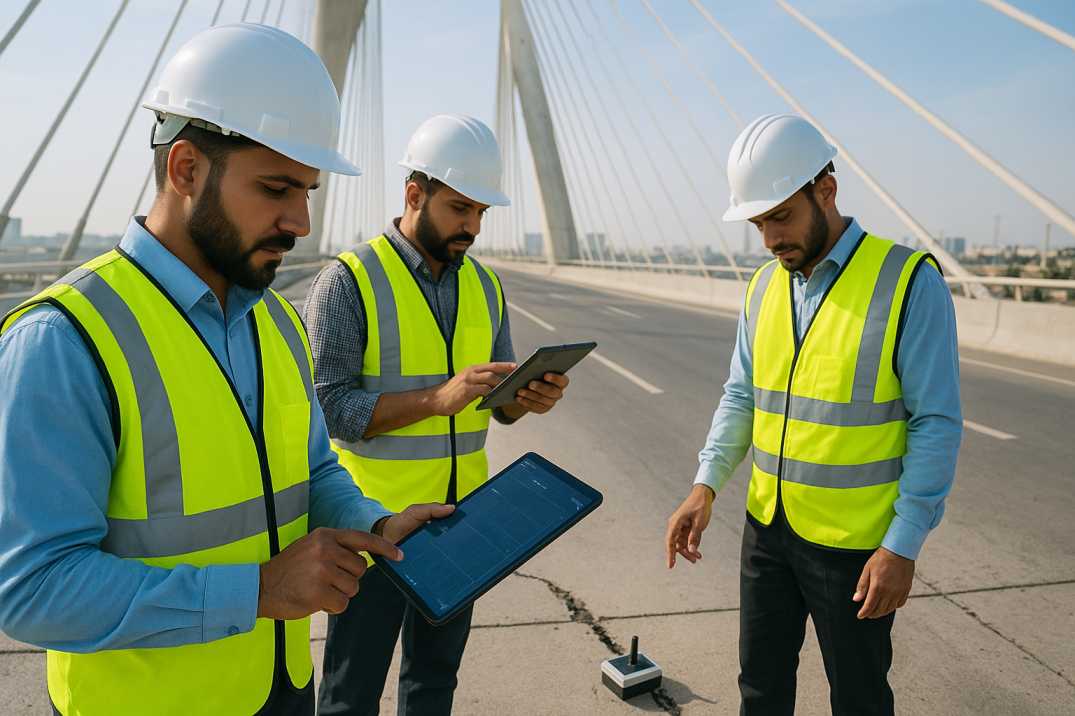Contact Us
RoadVision AI
Private Limited
Office No. 308 & 310, B Block
Ansal Chamber - 1, Bhikaji Cama Place,
Near Engineers India Limited (EIL) Bhawan, New Delhi - 110066
© 2024 | RoadVision AI | All rights reserved
Road asset management Saudi Arabia is undergoing a major transformation as the Kingdom continues to modernize its infrastructure in line with Saudi Vision 2030. Bridges form a critical component of the national highway and expressway network, connecting urban centers, industrial zones, and trade corridors. The durability of bridges, especially their decks and expansion joints, directly influences safety, traffic flow, and economic resilience. However, traditional inspection and maintenance methods are often reactive, costly, and prone to delays.
This is where AI-based bridge maintenance and digital bridge maintenance systems are revolutionizing the sector. By adopting predictive analytics, computer vision, and machine learning, Saudi Arabia is ensuring safer, longer-lasting, and cost-efficient bridges.

Bridge decks carry the primary load of traffic and are exposed to high stress from vehicles, weather, and temperature variations. Expansion joints, on the other hand, allow for movement caused by thermal expansion and contraction, protecting the structural integrity of bridges.
In Saudi Arabia, where summer temperatures often exceed 45°C, these components face significant wear and tear. According to official regulations from the Ministry of Transport and Logistics Services (MOTLS) and the Saudi Standards, Metrology and Quality Organization (SASO), routine monitoring and preventive maintenance of bridges are mandatory to ensure public safety and compliance with national quality standards.
Neglecting decks and joints can lead to surface cracking, water seepage, and structural fatigue, which not only increases repair costs but also disrupts mobility across highways and industrial routes. This makes predictive, data-driven approaches essential.
Traditionally, bridge maintenance in Saudi Arabia relied on manual inspections and reactive repairs. This approach has several limitations, including human subjectivity, delayed response to early warning signs, and higher lifecycle costs.
With digital bridge maintenance systems, authorities can now transition to predictive models that use AI, IoT sensors, and high-resolution imaging to detect potential failures before they occur. For instance, AI algorithms can analyze patterns of stress, vibration, and thermal expansion to forecast when a joint or deck might require attention.
This predictive strategy reduces downtime, optimizes repair scheduling, and ensures compliance with MOTLS standards for asset safety and serviceability.
AI-based bridge maintenance combines multiple technologies to enhance accuracy and efficiency:
These innovations align with Saudi Arabia’s broader push for smart infrastructure management and support its goal of becoming a leader in sustainable road and bridge operations.
Implementing AI-based bridge maintenance for decks and expansion joints offers multiple advantages:
Global leaders like RoadVision AI are helping countries like Saudi Arabia embrace predictive and digital infrastructure management. RoadVision provides AI-powered tools such as:
Through case studies available on their blog and case study section, RoadVision has demonstrated how AI-driven digital bridge maintenance systems are reshaping infrastructure resilience worldwide.
Saudi Arabia’s growing infrastructure requires advanced, reliable, and intelligent maintenance strategies. AI-based bridge maintenance for decks and expansion joints provides the Kingdom with predictive tools to safeguard its transport network, reduce costs, and ensure compliance with national regulations. By adopting digital bridge maintenance systems, Saudi Arabia is setting a global benchmark for smart infrastructure management.
RoadVision AI is transforming road infrastructure development and maintenance with its innovative AI in road maintenance and AI in road construction solutions. By utilizing cutting-edge computer vision technology and digital twin models, the platform conducts comprehensive road safety audits, enabling the early detection of potholes, cracks, and other surface issues for timely repairs and enhanced road conditions. The use of AI in road safety also extends to traffic surveys, providing data-driven insights to tackle challenges like traffic congestion and optimize road usage. Focused on building smart roads, RoadVision AI ensures full compliance with IRC Codes, and aligns with SHC 101 and SHC 202 — Saudi Arabia’s official highway and infrastructure development codes — empowering engineers and stakeholders to reduce costs, minimize risks, and elevate road safety and transportation efficiency.
If you want to see how predictive AI systems can strengthen your infrastructure, book a demo with us today.
Q1: Why are expansion joints critical in Saudi bridges?
Expansion joints protect bridges from thermal expansion and contraction, which is vital in Saudi Arabia’s extreme climate.
Q2: How does AI improve bridge maintenance compared to traditional methods?
AI enables predictive analytics, automated defect detection, and optimized scheduling, making maintenance proactive instead of reactive.
Q3: Does Saudi Arabia mandate digital bridge inspections?
Yes, MOTLS regulations require periodic inspections, and AI-driven systems support compliance while enhancing safety.